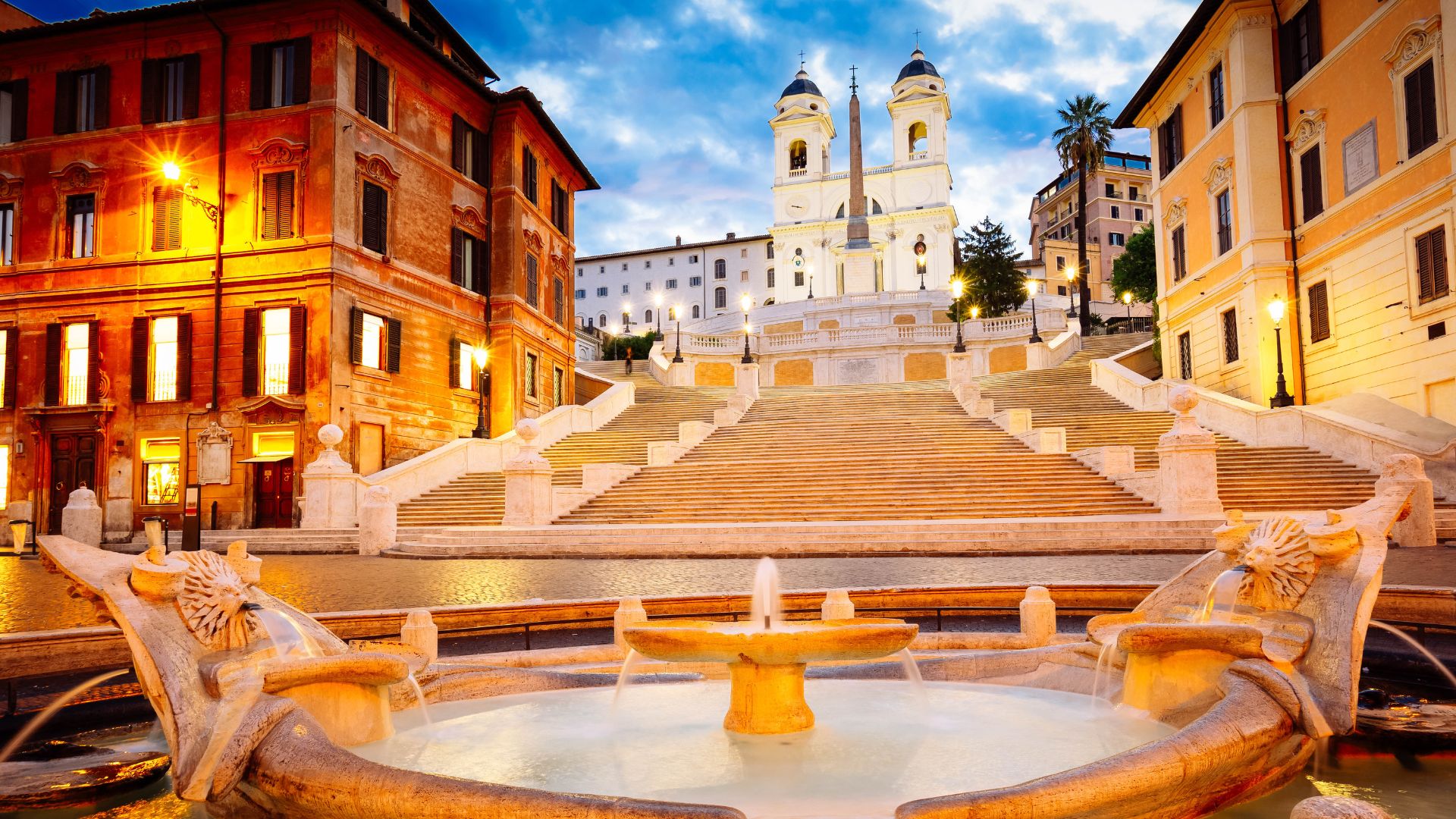The Spanish Steps in Rome transform with each passing season, creating a living canvas that captures the changing moods of the Eternal City. During my many visits to this iconic landmark, I’ve witnessed how this magnificent staircase becomes a different experience as the months roll by.
The most spectacular transformation happens in late April when the Spanish Steps burst into a riot of color with azaleas adorning every level to celebrate Rome’s birthday festivities.
Walking through Rome in spring remains one of my favorite memories. The Spanish Steps come alive not just with flowers but with a renewed energy as both locals and visitors gather to soak in the sunshine.
I’ve spent countless afternoons people-watching from these historic steps, noticing how the golden hour light bathes the travertine marble in a warm glow unlike any other place in the city.
Beyond spring’s floral display, the Spanish Steps host various cultural events throughout the year, from elegant fashion shows to atmospheric concerts. I’ve found myself returning in different seasons just to experience the changing character of this beloved landmark.
Summer evenings bring a lively atmosphere, autumn offers comfortable temperatures with fewer crowds, and winter wraps the steps in a peaceful calm that lets you appreciate their architectural beauty without distraction.
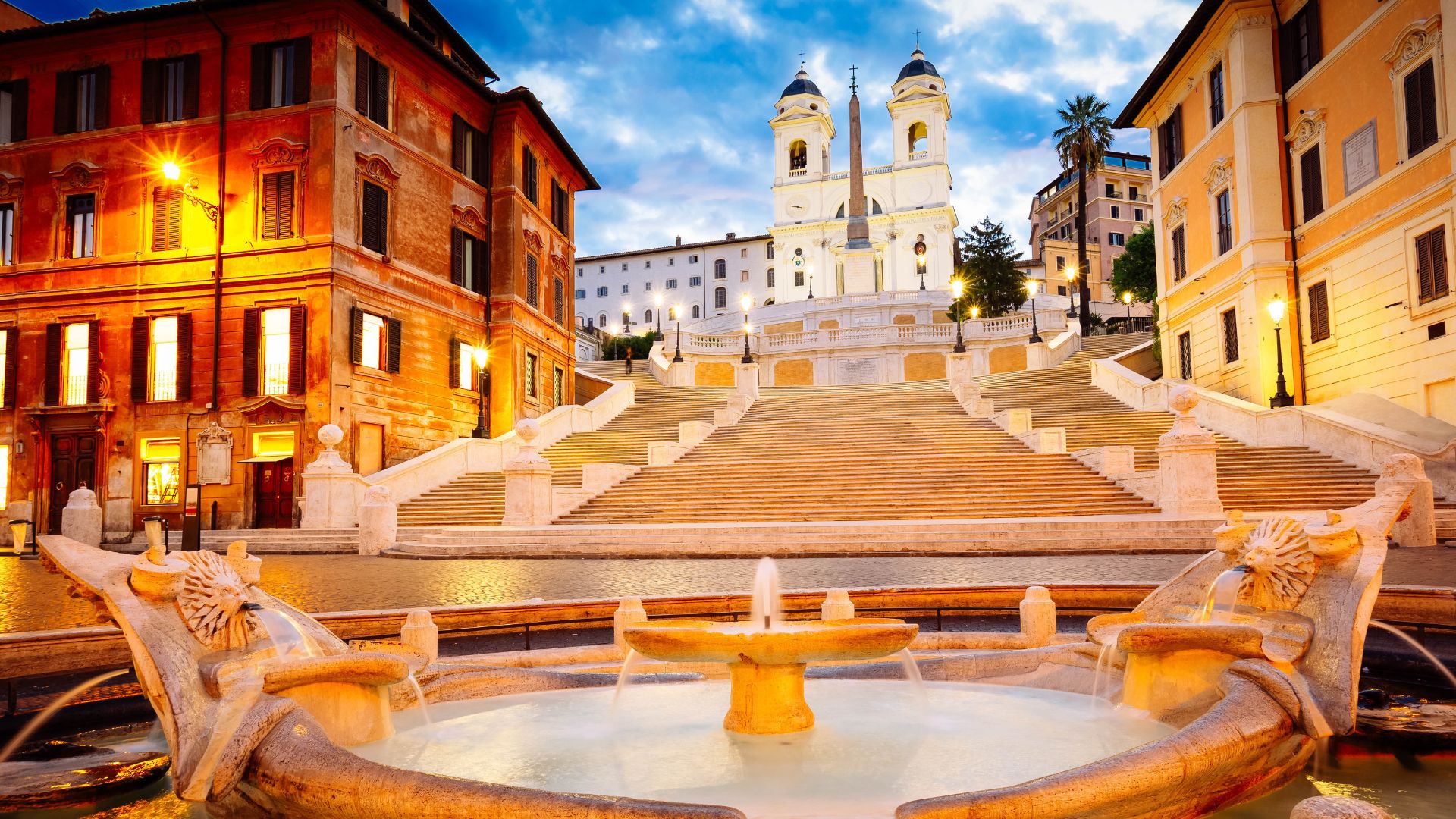
The Magic of the Spanish Steps in Spring
Spring transforms Rome’s famous Spanish Steps into a vibrant celebration of color and life. The historic staircase becomes the heart of seasonal festivities that have drawn visitors for generations.
Floral Festivities and Roman Revelry
During my visits to Rome in spring, I’ve witnessed the Spanish Steps become a stunning floral masterpiece. Typically beginning in April, the steps are adorned with hundreds of azalea plants in vibrant pinks, whites, and reds. This annual tradition creates one of Rome’s most photographed scenes.
The display is part of Rome’s spring festival, when locals and tourists gather to celebrate the arrival of warmer days. I love to grab a gelato from a nearby shop and sit among the blooms, watching street performers entertain the crowds.
For the best experience, I recommend visiting in the morning before the crowds thicken. The steps connect the Piazza di Spagna with the Via Veneto area, making it perfect for beginning a day of exploring Rome’s treasures.
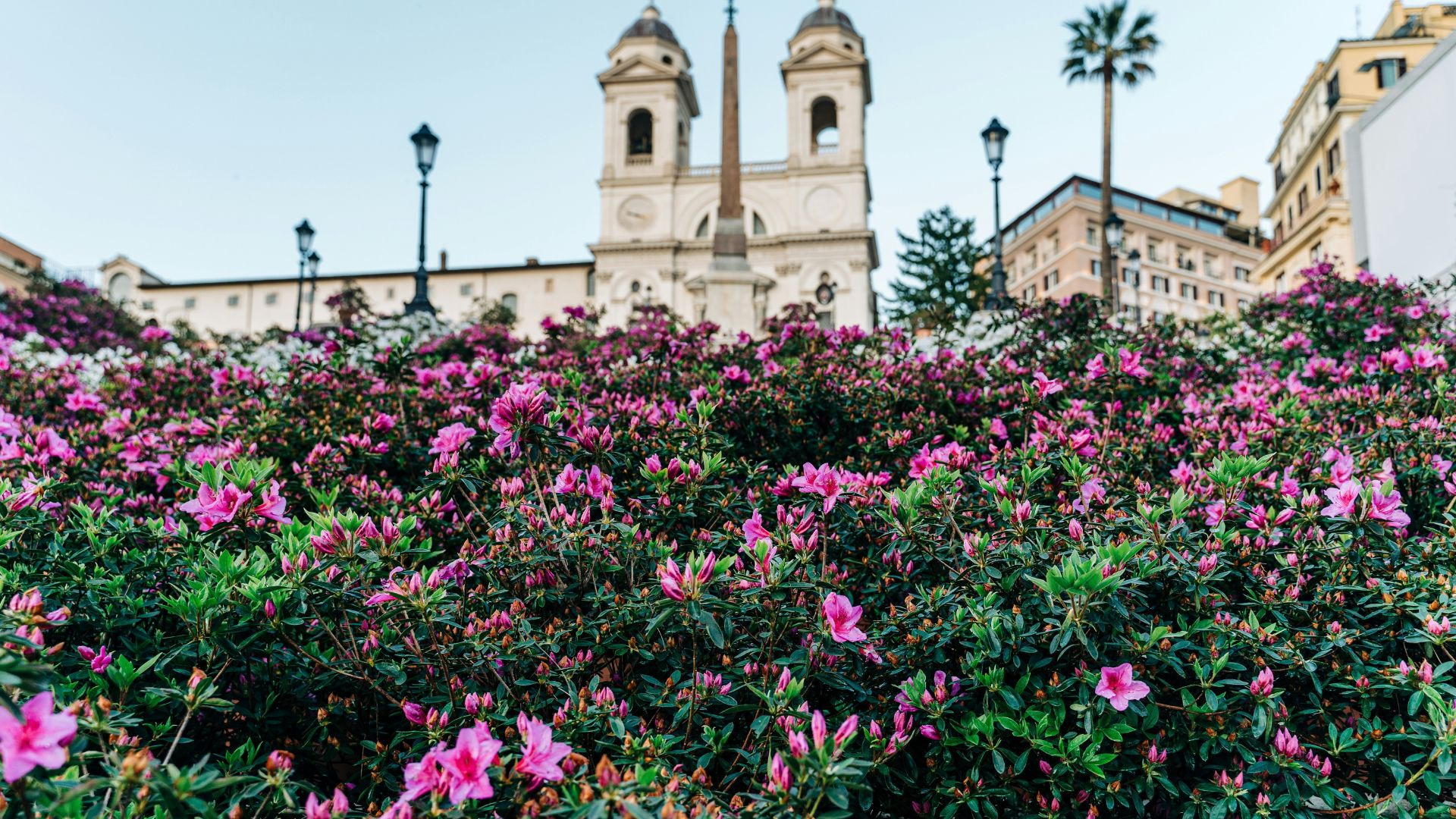
A Scented Stairway: Blooming Beauty
The fragrance in spring is what truly makes this experience magical. Beyond the azaleas, climbing jasmine and other native flowers contribute to a naturally perfumed atmosphere that transforms this architectural landmark.
When planning your travel to Italy, timing your visit during this spring display (usually mid-April to early May) offers a unique perspective on this famous monument. The contrast between the ancient travertine stone and fresh spring blooms creates a uniquely Roman visual feast.
I often bring a small sketchbook to capture the scene. The steps represent the special relationship between Rome and the Vatican, something made more evident when the sunshine bathes both the flowers and the historic staircase in golden light.
The area becomes notably more crowded during this season, but the spectacular display makes any jostling worthwhile.

Summer at the Steps: A Symphony of Sunshine
Summer transforms the Spanish Steps into a vibrant urban oasis, where golden light plays across the travertine marble and visitors find respite in the surrounding cafés and gelaterias.
Sunlit Sculptures and Shimmering Shadows
I love visiting the Spanish Steps during summer mornings when the rising sun creates dramatic shadows across the 135 steps. The heat of midday (often reaching 86°F/30°C) means fewer crowds between 12-3 pm, making this a surprisingly peaceful time for photography enthusiasts.
The Fontana della Barcaccia at the base glitters magnificently in summer light. I’ve found the best views are from the top of the steps looking down toward Piazza di Spagna around 5 pm, when the lowering sun bathes everything in a golden glow.
Nearby, Piazza Barberini offers a welcome shady retreat with its magnificent Triton Fountain. When summer temperatures soar, these fountains become natural gathering spots for both locals and tourists seeking a moment of coolness.
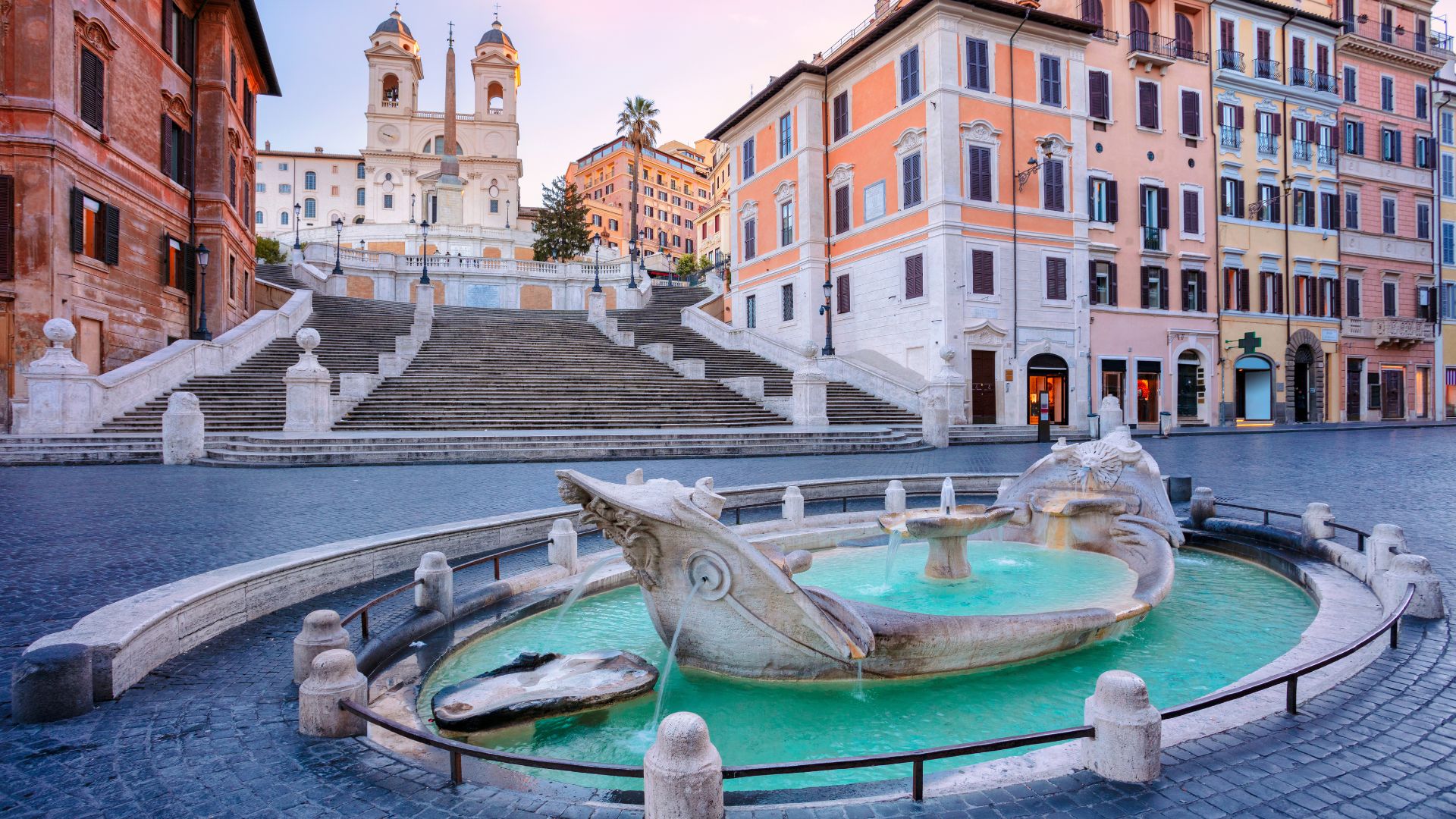
Culinary Delights: Gelato and Piazzas
Summer evenings at the Steps are incomplete without gelato in hand! My favorite gelateria is just around the corner from the Spanish Steps, where I always order a combination of pistachio and dark chocolate.
The surrounding piazzas transform into dining spaces with Italian flare. White-clothed tables spill onto cobblestones, and the scent of fresh pasta and seafood fills the warm evening air.
For the best food pairings, I recommend a light Pinot Grigio with seafood pasta at one of the restaurants near Piazza Barberini. The refreshing combination perfectly complements summer’s warmth.
After dinner, the Steps become an impromptu evening hangout. Locals and visitors sit together, enjoying music from street performers and the magical glow of Rome’s summer twilight that seems to last forever.
Autumn Aesthetics at the Spanish Steps
As summer crowds thin out, the Spanish Steps transform into a haven of amber hues and cultural richness. The autumn months bring a special character to this iconic Roman landmark, with fewer tourists and a more relaxed atmosphere.
The Golden Hour: Amber Tints and Aged Beauty
During autumn, I’ve noticed the Spanish Steps take on a magical quality as the low seasonal sun casts golden light across the travertine marble. This “golden hour” effect turns the already beautiful staircase into something truly spectacular, especially in late afternoon.
The shoulder season brings more comfortable temperatures and creates perfect conditions for lingering on the steps. I love watching how the sunlight plays across the 135 steps, highlighting centuries of wear that tell stories of countless visitors.
From the steps, I can see the autumn transformation of nearby Borghese Gardens, with its trees displaying fiery oranges and deep reds. This panoramic view offers a striking contrast to the stone architecture of the steps themselves.
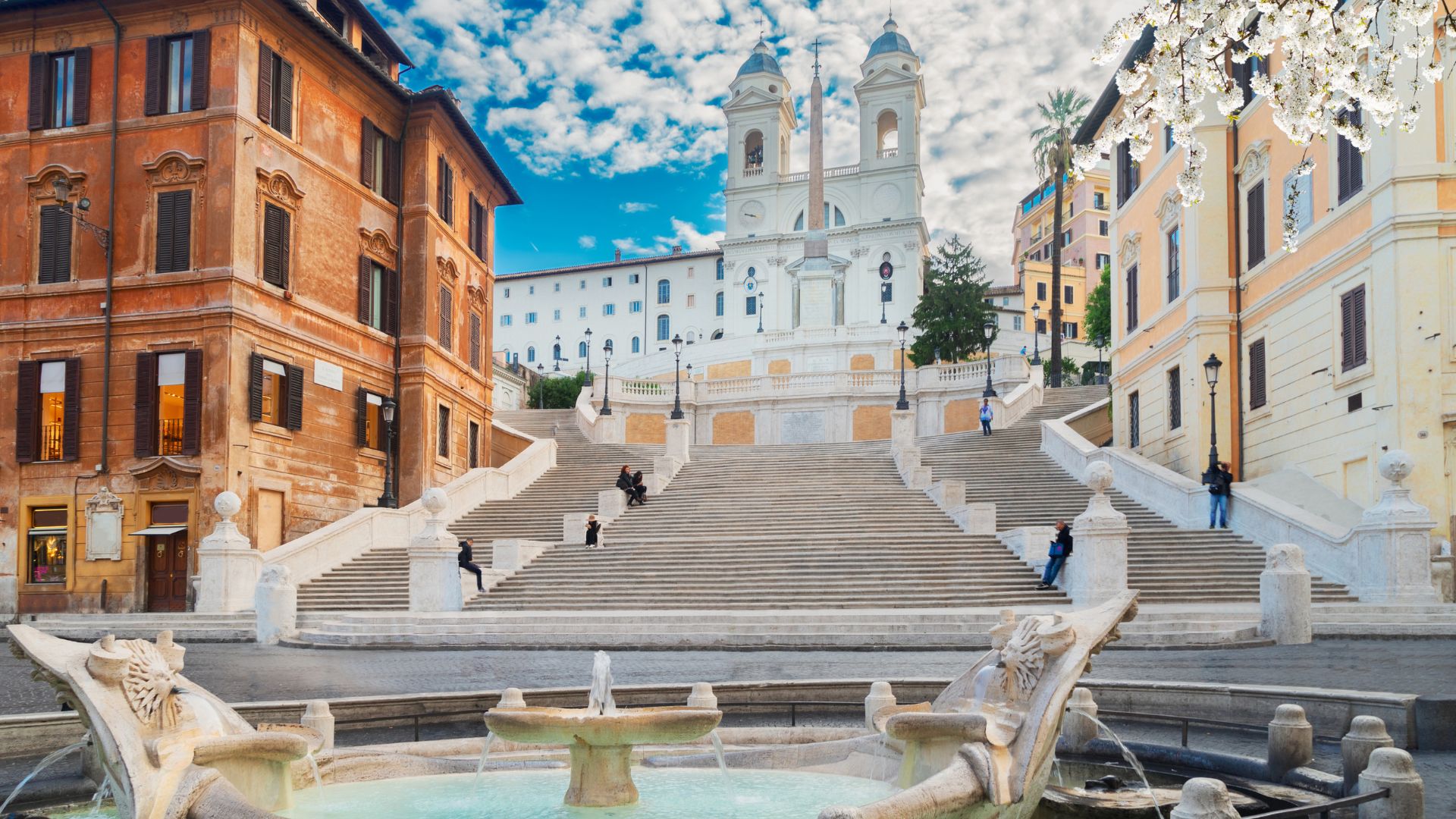
Art and Culture as Leaves Fall
Autumn brings a renewed focus on culture around the Spanish Steps. With summer’s fashion shows concluded, the area hosts fascinating art exhibitions and cultural events that showcase Rome’s artistic heritage.
The cafés surrounding the piazza shift their offerings to seasonal specialties, creating cozy spots to enjoy Rome’s autumn flavors. I’ve found this is the perfect time to sip a warm drink while people-watching at the foot of the steps.
Local artists often gather here during autumn days, capturing the changing light on canvas. Their presence adds to the cultural atmosphere that makes the Spanish Steps more than just a monument, but a living piece of Rome’s artistic tradition.
Winter Whispers: A Timeless Tranquility
Rome transforms into a magical wonderland during winter, and the Spanish Steps offer a unique charm when fewer tourists roam its historic stones. The crisp air and soft lighting create an atmosphere of peaceful reflection unlike any other season.
Christmas Lights and Eternal Nights
Walking up the Spanish Steps in December is an experience I’ll never forget. The entire area glows with tasteful holiday decorations, creating a warm contrast against the cool winter sky. Strings of lights drape across nearby buildings, illuminating the travertine steps with a golden hue.
For the best views, I recommend arriving around dusk when the lights first come on. The nearby shops along Via Condotti display elaborate holiday window designs, creating a festive pathway leading to the steps.
After exploring the Steps, I love walking to the Trevi Fountain, which is equally magical in winter illumination. The crowds are thinner, allowing for unobstructed photos and a more intimate experience with this iconic monument.
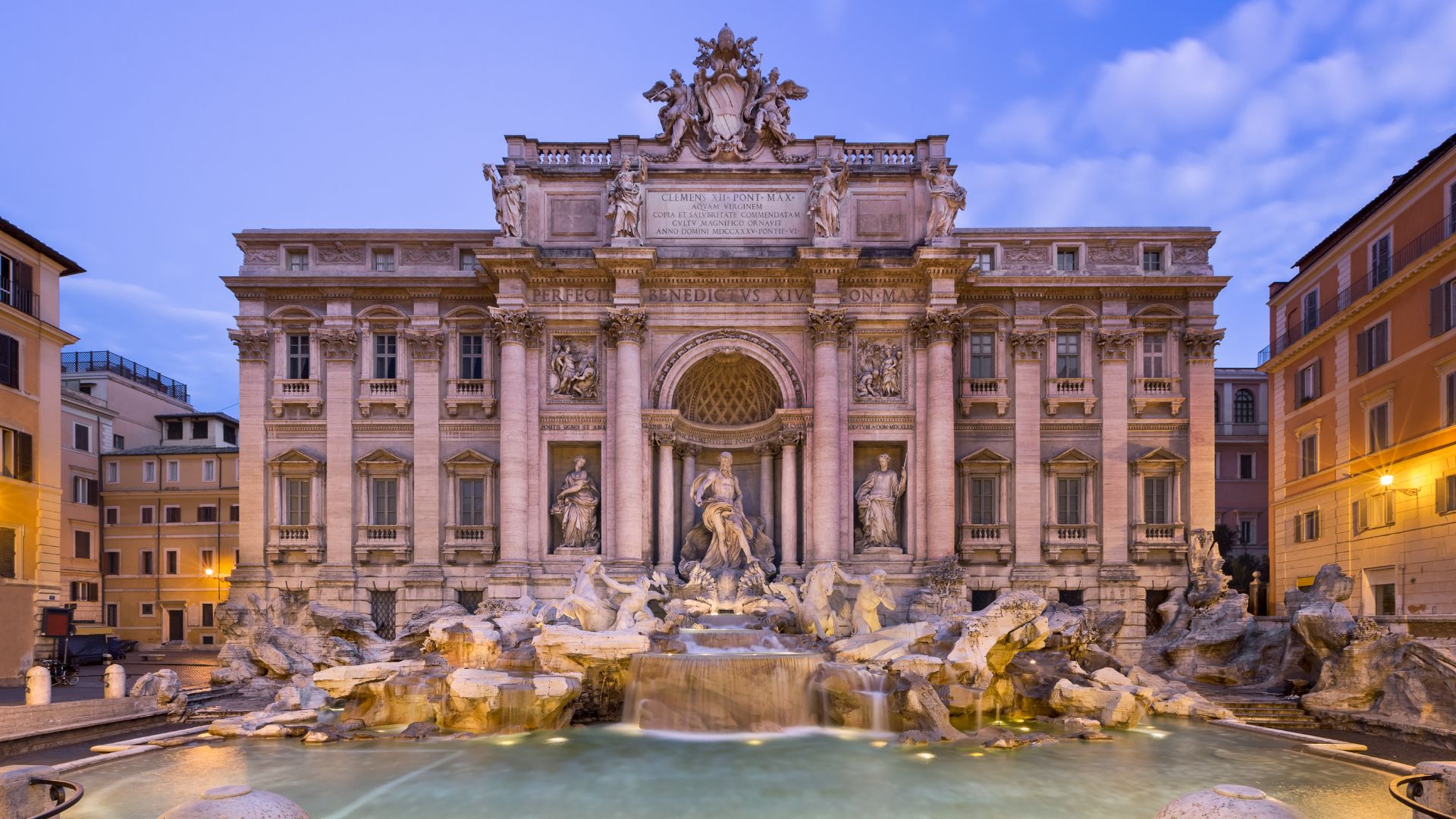
Romantic Reflections Amidst Crisp Air
There’s something deeply romantic about winter at the Spanish Steps. The cool temperatures invite closer walking, and the clear winter air offers stunning visibility across the city.
On crisp mornings, I find myself almost alone on these historic stairs, watching my breath form small clouds as I gaze toward St. Peter’s Basilica in the distance. The dome stands out clearly against the winter sky – a view that disappears in summer’s haze.
Evenings call for warming up in nearby cafés, where I enjoy rich Italian wines while people-watching. My favorites include:
- Brunello di Montalcino – perfect for cold evenings
- Amarone della Valpolicella – pairs wonderfully with winter dishes
- Vin Santo – a sweet finish to any meal
The winter light bathes the travertine in a soft glow that photographers dream about. Bring your camera and capture the Spanish Steps in their most serene state.
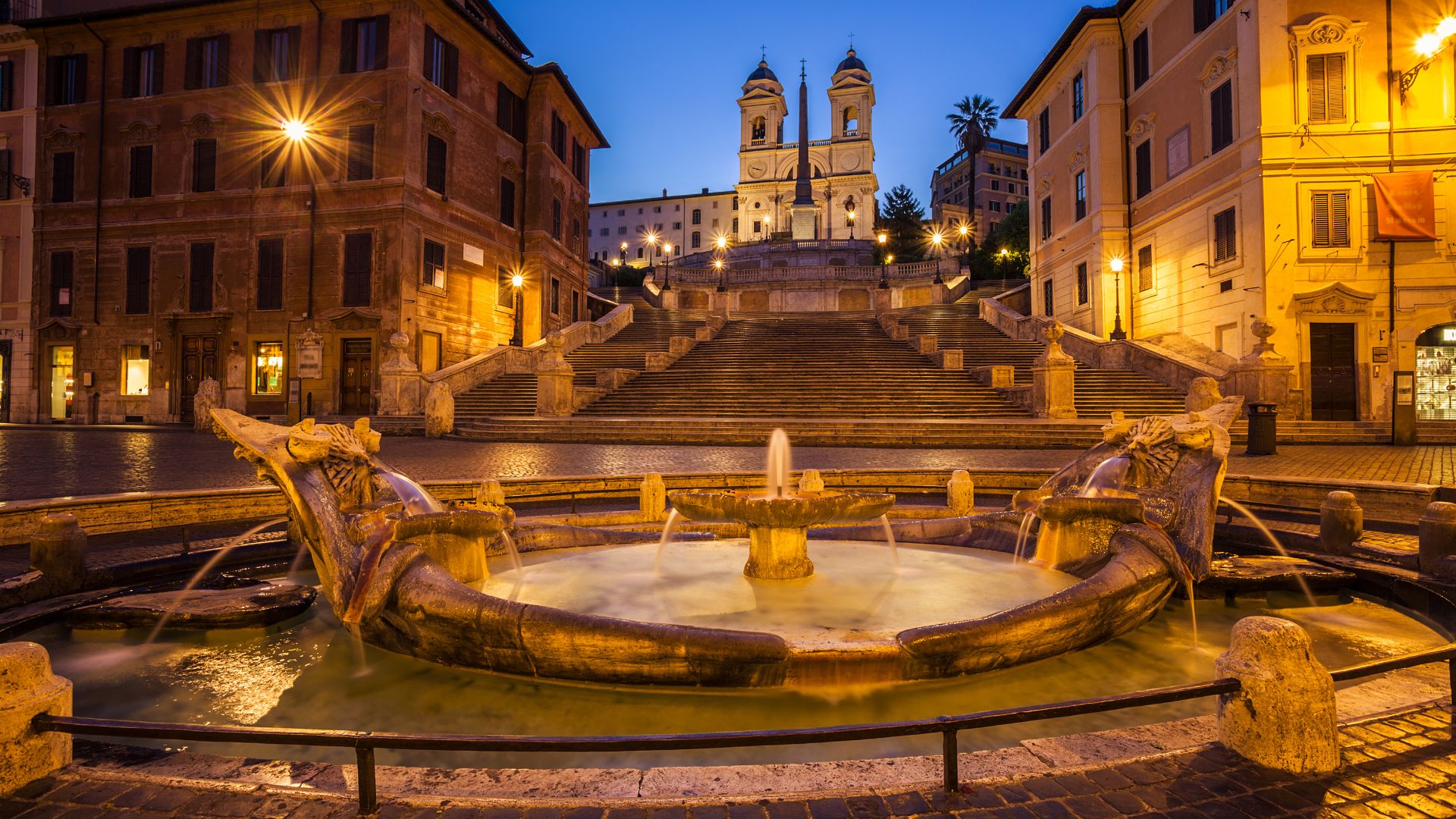
Unveiling the Layers of History
The Spanish Steps tell a story that spans centuries, blending influences from multiple eras while maintaining their distinct character and charm.
From the Roman Empire to La Dolce Vita
When I walk up the Spanish Steps, I’m climbing through history. Though built between 1723-1725, the area’s significance stretches back to Roman times. The steps themselves were funded by a French diplomat, creating an interesting international mix that continues today.
In the 1950s and 60s, these steps became world-famous during the “La Dolce Vita” era. I love imagining Audrey Hepburn here in “Roman Holiday,” which helped cement the stairs as a symbol of Italian glamour and romance.
The steps have witnessed everything from ancient Roman processions near the Colosseum to modern fashion shows. Each of the 135 steps has seen countless tourists, locals, artists, and dreamers pass by.
Architectural Harmony: The Steps’ Rationalist Style
The Spanish Steps showcase a beautiful blend of Baroque and Rationalist styles. I find the clean lines and balanced proportions create a sense of harmony that’s both welcoming and impressive.
Key architects behind the design included figures like Cesare Pascoletti, who worked with Marcello Piacentini on various Roman landmarks. Their influence shaped the steps’ distinctive silhouette that we recognize today.
What makes these steps special is how they connect two distinct levels of Rome, both physically and metaphorically. The design isn’t just beautiful—it’s functional, linking the church at the top (Trinità dei Monti) with the square below.
During my visits, I’ve noticed how the steps create natural places to sit, gather, and enjoy the rhythms of Roman life, exactly as the architects intended centuries ago.
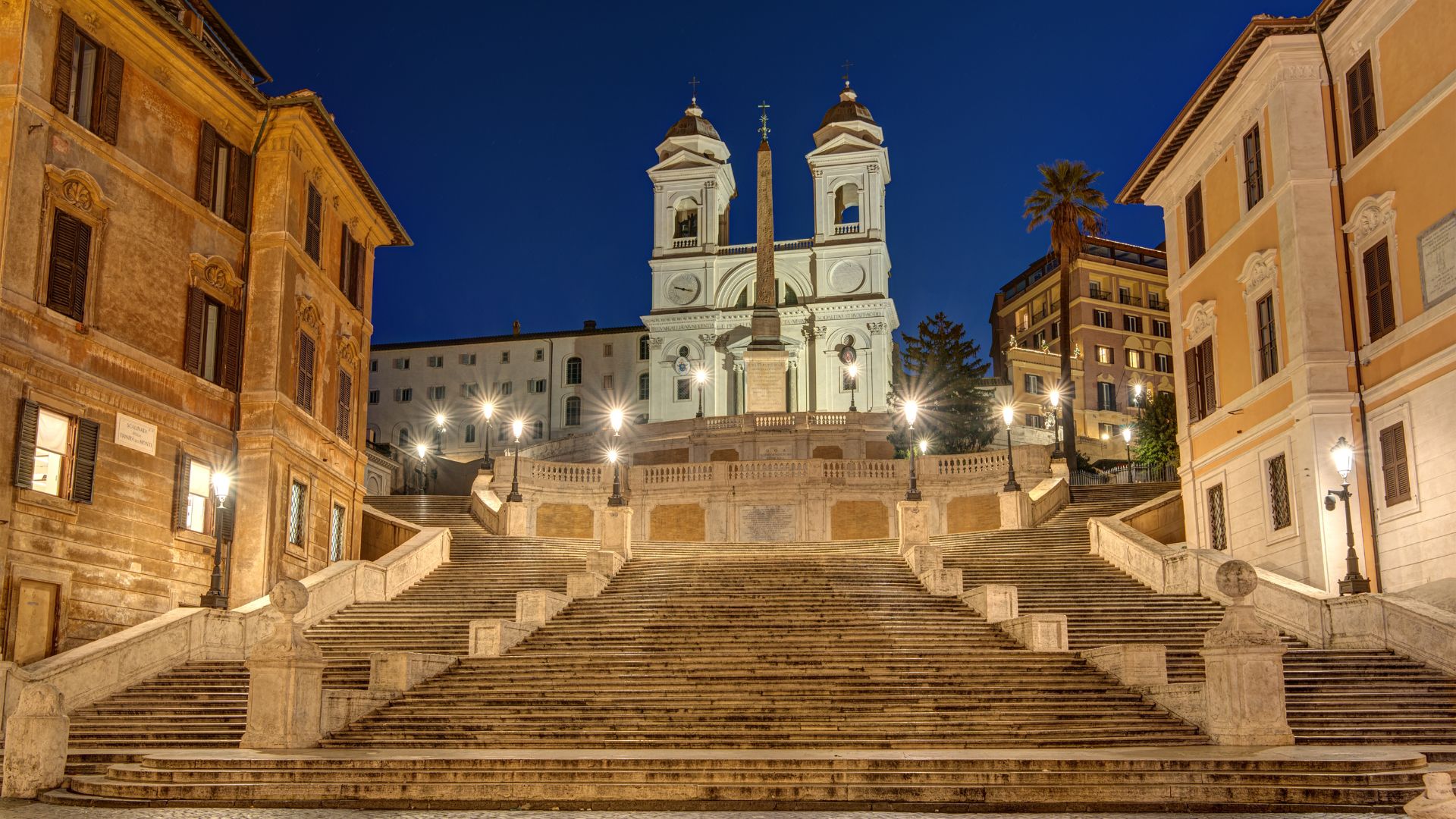
Modern-Day Encounters: Experiencing the Spanish Steps
The Spanish Steps offer more than just beautiful architecture and history—they’re a vibrant social hub where fashion, food, and relaxation blend seamlessly. Visitors can immerse themselves in authentic Italian culture while enjoying modern luxuries.
Chic Italian Fashion and Timeless Tradition
Walking around the Spanish Steps, I’m always struck by the incredible fashion scene. High-end boutiques line the nearby Via Condotti, showcasing the finest Italian craftsmanship that attracts fashionistas from around the world.
The Statuto Group recently renovated several historic buildings near the steps, preserving their classic charm while adding modern amenities. These renovations have attracted luxury retailers who balance tradition with contemporary style.
I love watching stylish locals navigate the steps in impeccable outfits, offering a free fashion show to admiring tourists. The area remains true to its roots as a gathering place for artists and the elite, though now accessible to all who appreciate beauty.

The Pursuit of Pleasure: Urban Wellness and Gastronomy
After climbing the 135 steps, I often reward myself at one of the charming cafés nearby. The area boasts traditional Italian dishes with modern twists that satisfy both purists and adventurous eaters.
My favorite discovery was a hidden urban wellness space designed by hospitality legend Ian Schrager. This peaceful retreat offers massage services and meditation classes just steps away from the tourist bustle.
For a truly special experience, book a table at a restaurant with a private garden overlooking the steps. I’ve spent magical evenings sipping local wine while watching the sunset paint the marble steps golden.
The contrast between the historic setting and modern indulgences creates a uniquely Roman experience. Small gelaterias offer authentic Italian flavors, perfect for enjoying as you people-watch on these famous steps.

